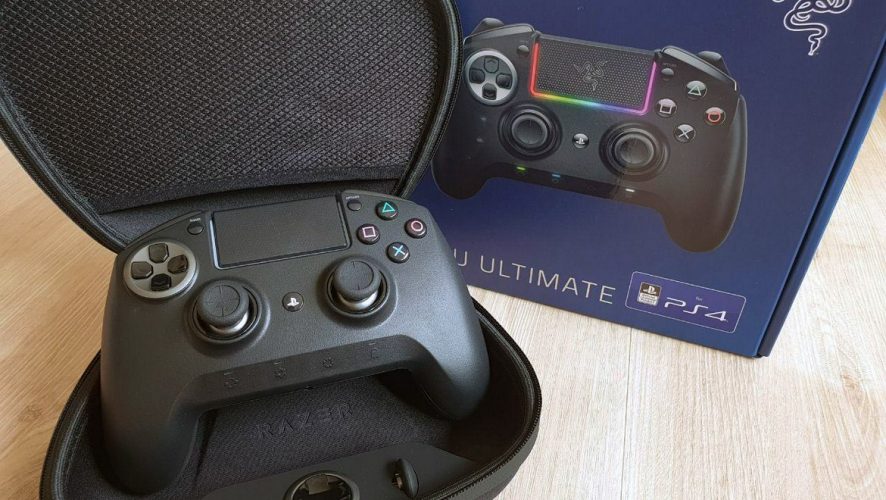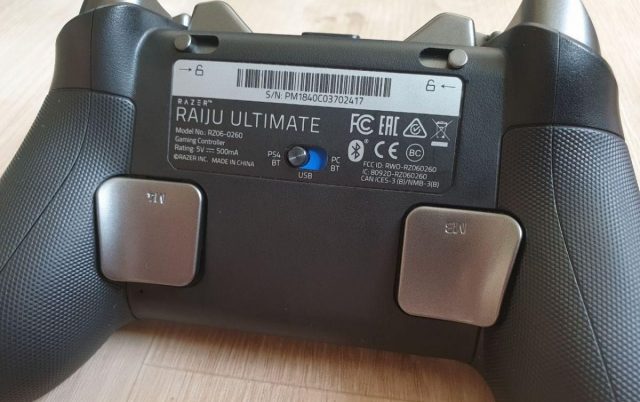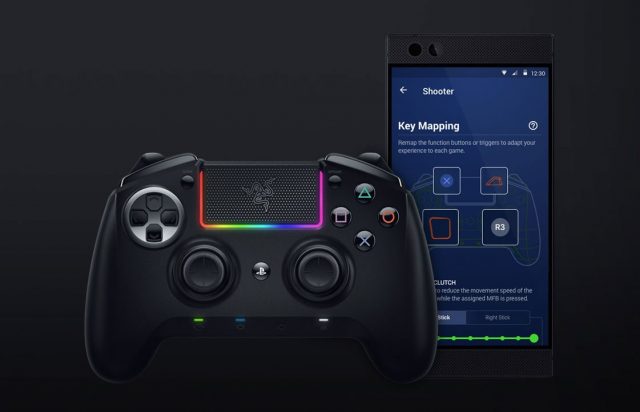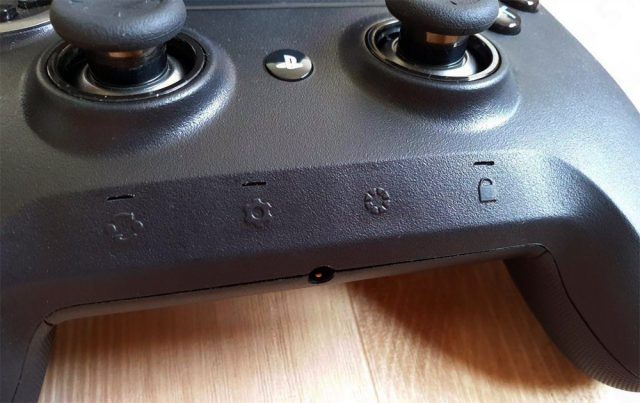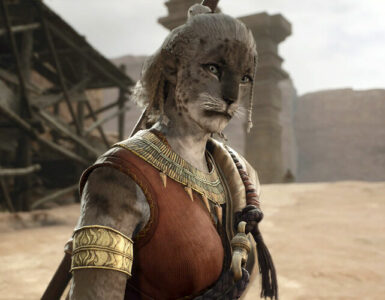We were not big fans of the original Razer Raiju controller back in 2016. Razer was among the first to develop a professional gaming controller for the PlayStation 4 but even after 2 years, there have been plenty of pretenders to the throne, there has been no clear winner in developing a truly Xbox Elite controller equivalent for the PlayStation ecosystem.
And as 2018 draws to a close, Razer is trying again, this time with the Raiju Ultimate, and it improves upon the original’s vision in each and every way, and most importantly, forgoing the need for a wired connection with Bluetooth functionality. Unfortunately, though, it is also where it fails the most in an otherwise impressive showing.
The Raiju Ultimate feels like a premium peripheral, with its heft immediately obvious when compared to the DualShock 4. It is solid to the touch and hardy, and with a layer of rubberized coating at the back, the Raiju Ultimate sits nicely in your grasp.
Much like the DS4, there are no offset sticks (unlike the Raiju Tournament Edition), with the familiar touchpad, Options, Share, and PlayStation buttons laid out exactly the same way.
However, unlike the less durable sticks of the DS4, the sticks here are just perfect in function and form, and do not look like they will be out of commission any time soon. Movement is snappy and intuitive, while the magnetized tops can be removed easily, for either concave or convex configurations. Players even have an extended option for added height.
The directional pads can also be switched out with either a tilting or individual D-Pad layout, and while we did not develop any particular preference, the more plastic feeling nature of the D-pads was a disappointment.
Razer’s Mecha-Tactile Action face buttons, even the Chroma-enabled touchpad, really hit the spot when in use. While the entire package of the DS4 has won universal love and acclaim, the Raiju Ultimate’s clicky face buttons are such an experience that they are now something that I would change for in the otherwise perfect DS4.
The L1 and R1 triggers are longer and wider, while the L2 and R2 triggers are shaped in a way to accommodate a gamer’s fingers. A simple flip of switches at the rear of the controllers and both triggers can be adjusted to hair triggers, giving you quicker input when you need them.
The draw of the Raiju Ultimate is the addition of four extra multi-function buttons (like the Raiju) that can be programmed by a smartphone app or via button combinations. M1 and M2 are triggers nestled between the L2 and R2, while M3 and M4 are flat buttons situated at the back where your fingers usually end.
With several profiles to configure to suit whatever genre of game you are playing, it takes some setting up before you will end up with a configuration that feels right at home.
The mobile app can do more than just remapping of M1 to M4 – it can also help you adjust Profiles (currently set to Shooter, Fighting, Sports or Racing with colour codes) with features like analogue stick sensitivity, vibration motor strength, and of course, Chroma lighting. Remapping of the face buttons/triggers is still not possible yet, and updating your Raiju Ultimate still requires a wired connection to the PC, which certainly feels like an oversight.
While we experienced some issues connecting to the app, it is an easy-to-use and convenient method of tweaking your Raiju Ultimate.
In addition to the Profile changing button along the bottom of the Raiju Ultimate, there is a Configure button that helps connect the controller to the app, a Chroma button that changes up lighting, and a convenient Lock button that disables the non-important inputs like the Options, Share buttons and more.
Unfortunately, it is still way too easy to hit the additional multi-function buttons on accident, like throwing a grenade in a room full of friendlies, and there is no disabling them. Unless you have a need for extra buttons at your fingertips, the Raiju Ultimate might not be for you.
The Raiju Ultimate is more than just a PS4 controller alternative, as it can also be used for PC gaming wirelessly as well. A toggle on the back of the controller gives you access to PS4 Bluetooth, USB, or PC Bluetooth connections.
When connected via USB, the Raiju Ultimate works like the dream it is selling, and you do not have to worry about input lag or battery running out, it is a great addition to any gaming setup. However, when on Bluetooth mode, the issues begin to crop up.
Pairing issues aside, the base functions of the Raiju Ultimate are often hit-or-miss while connected via Bluetooth. There are instances of extremely noticeable input lag (up to a few milliseconds), analogue stick drifting, and the frustrating disconnection that happens way too often.
While Razer has updated the firmware for the Raiju Ultimate, which seems to have addressed the drifting, the latency and connection issues remain, and that is a big blow to a premium controller alternative when the DS4 performs almost flawlessly every time.
On the surface, the Raiju Ultimate ticks all the boxes we would want in a premium gaming controller for the PlayStation 4. In its wired form, it is truly a world beater, yet, the disappointing Bluetooth connection leaves much to be desired and should not even be an issue for a premium product.
Perhaps Razer will address these firmware issues in the future and help the Raiju Ultimate go from contender to king, but until then, the DualShock 4 remains our favourite way of playing on the PS4.
The Raiju Ultimate is available on Razer’s website, and retails for S$359.90.
GEEK REVIEW SCORE
Summary
It could have been the one premium controller the PlayStation ecosystem needed, but nagging issues prevent the Razer Raiju Ultimate from grabbing the crown of the DualShock 4.
Overall
7.6/10-
Aesthetics - 8/10
8/10
-
Build Quality - 9/10
9/10
-
Performance - 7/10
7/10
-
Value - 6/10
6/10
-
Geek Satisfaction - 8/10
8/10

